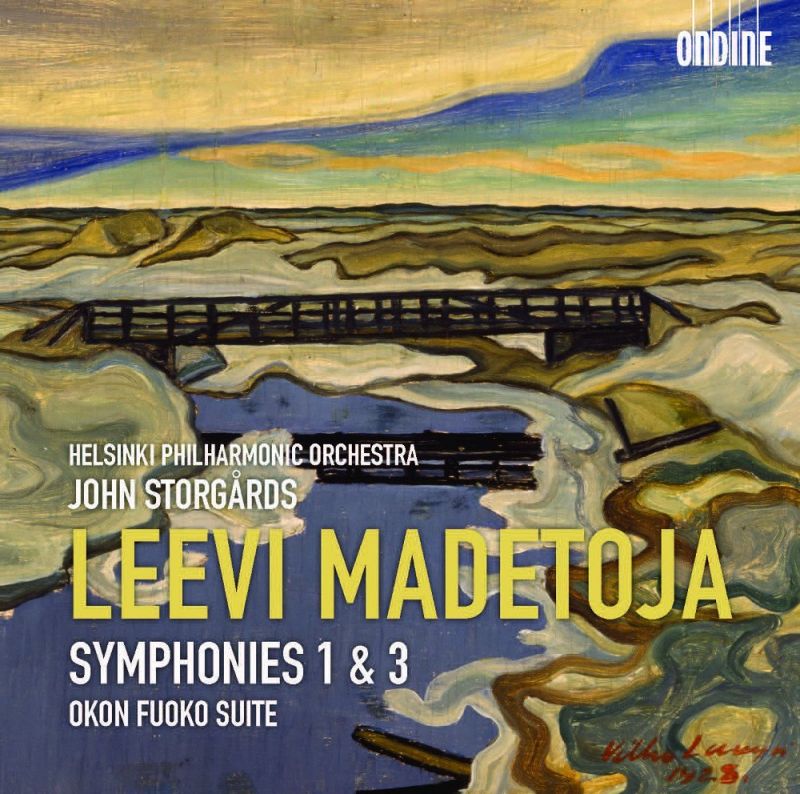MADETOJA Symphonies Nos 1 & 3
View record and artist detailsRecord and Artist Details
Composer or Director: Leevi Madetoja
Genre:
Orchestral
Label: Ondine
Magazine Review Date: 05/2014
Media Format: CD or Download
Media Runtime: 66
Mastering:
DDD
Catalogue Number: ODE1211-2

Tracks:
| Composition | Artist Credit |
|---|---|
| Symphony No. 1 |
Leevi Madetoja, Composer
Helsinki Philharmonic Orchestra John Storgårds, Conductor Leevi Madetoja, Composer |
| Symphony No. 3 |
Leevi Madetoja, Composer
Helsinki Philharmonic Orchestra John Storgårds, Conductor Leevi Madetoja, Composer |
| Okon Fuoko, Movement: Suite |
Leevi Madetoja, Composer
Helsinki Philharmonic Orchestra John Storgårds, Conductor Leevi Madetoja, Composer |
Author: David Fanning
The First Symphony (of 1914 16, making it an exact contemporary of Nielsen’s Inextinguishable) was nevertheless recognised by Sibelius, who guided Madetoja on and off from 1908 to 1910, as an auspicious debut. Touches of Sibelian chattering woodwind enliven the otherwise merely well-behaved first movement, and the affinity runs deeper in the other two movements without ever matching the master’s Beethovenian gift for opening up broad vistas from the tiniest of apertures.
A decade further on, the Third Symphony is mainly light and serenade-like in tone (very much so by comparison with the ambitious intervening Second). There is a touch of intriguing bleakness in the Adagio second movement but in general the piece feels like a throwback to a more comfortable age – around the 1870 or ’80s, perhaps.
More striking and memorable is the four-movement Okon Fuoko Suite, derived from Madetoja’s ballet-pantomime about a Japanese doll-maker driven to suicide by one of his creations. Composed shortly after the Third Symphony, the music is ear-catching in its sonorities and far from obvious in its rhythmic and harmonic language – sufficiently so as to prompt regrets that the hard-pressed composer did not live to realise his plans for a fourth symphony or a Finnish Parsifal.
The Helsinki performances are a touch more energetic and colourful than those of their Icelandic rivals on Chandos.
Discover the world's largest classical music catalogue with Presto Music.

Gramophone Digital Club
- Digital Edition
- Digital Archive
- Reviews Database
- Full website access
From £8.75 / month
Subscribe
Gramophone Full Club
- Print Edition
- Digital Edition
- Digital Archive
- Reviews Database
- Full website access
From £11.00 / month
Subscribe
If you are a library, university or other organisation that would be interested in an institutional subscription to Gramophone please click here for further information.




